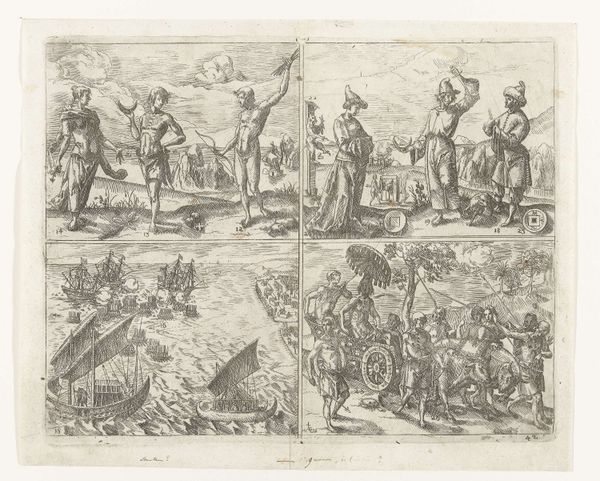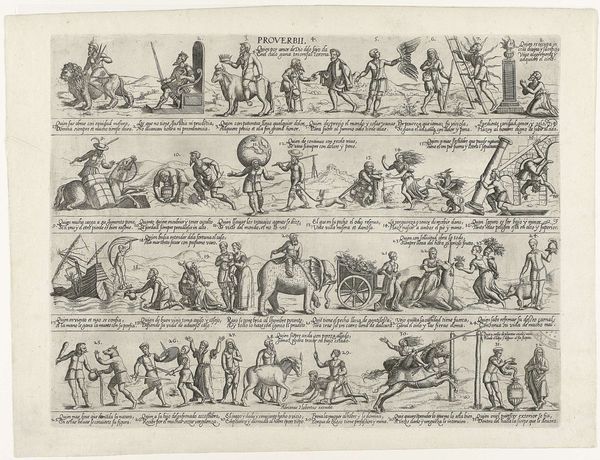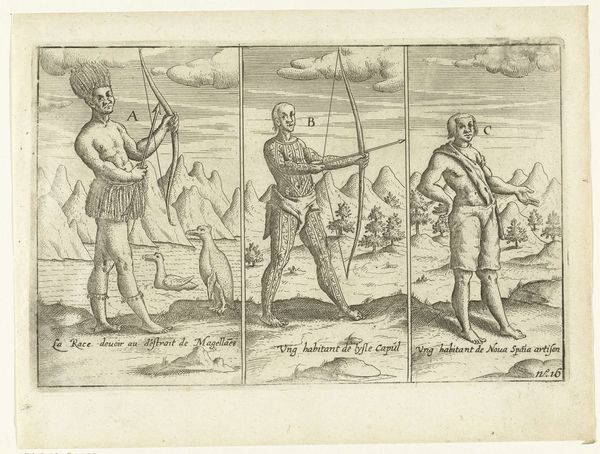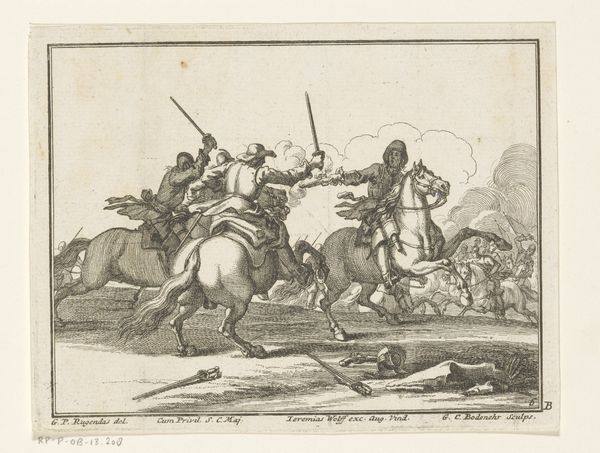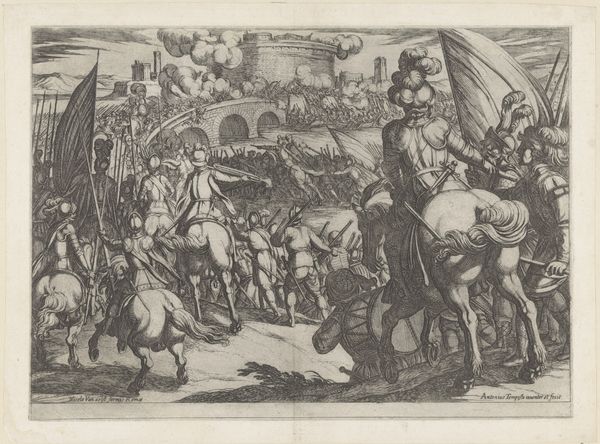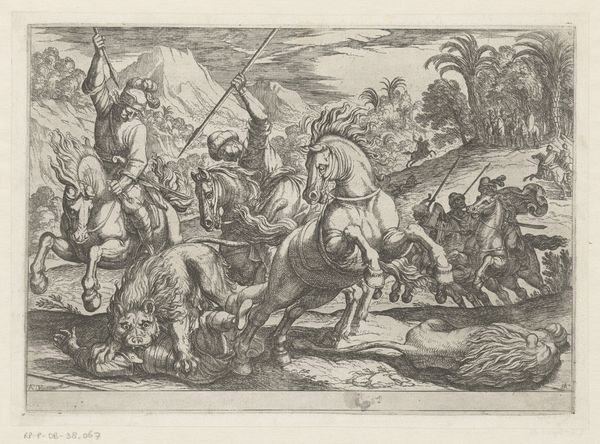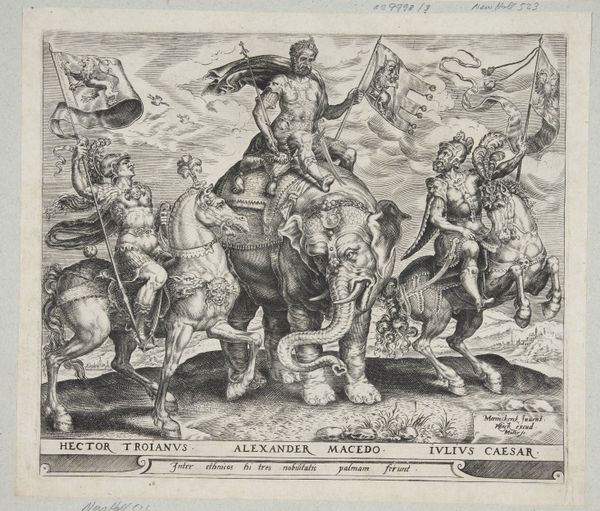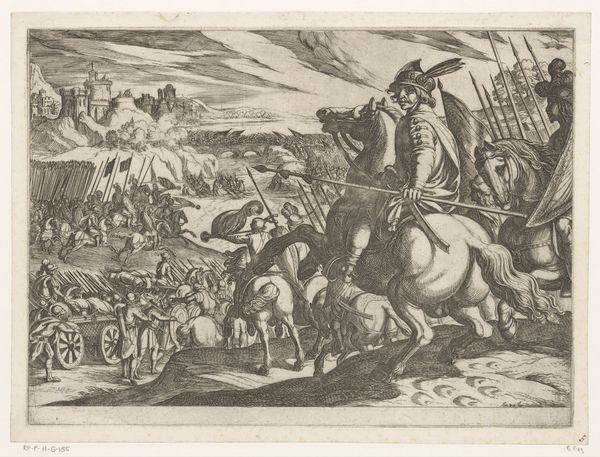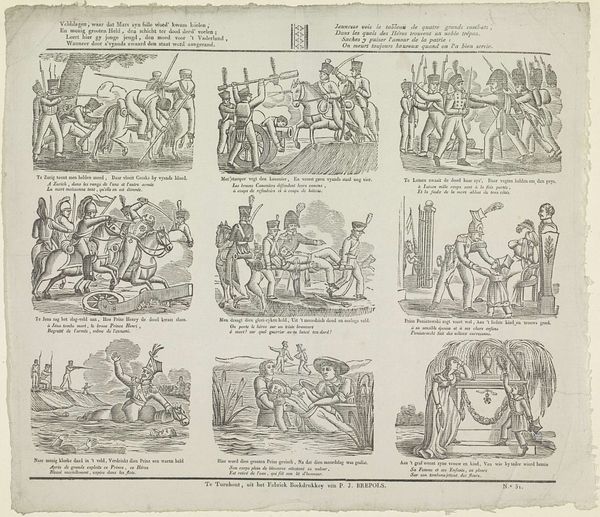
Dimensions: height 335 mm, width 422 mm
Copyright: Rijks Museum: Open Domain
Curator: This is “Hollandsche Soldaten in den Strijd,” or "Dutch Soldiers in Battle," by George Lodewijk Funke, likely created between 1865 and 1875. It appears to be an etching or print based on a drawing, a narrative-art piece depicting various scenes of combat. Editor: It's remarkably static for a war scene. All the figures seem carefully posed, almost like figurines waiting to be arranged on a diorama base. The monotone reinforces that stillness. Curator: Precisely! It reflects the prevailing Romanticism of the era, idealizing conflict. Observe the repeated motifs—the uniformed soldier, the charging stance. The artist focuses on producing images suitable for mass consumption. The pen, the etching process allowed for replicability. Editor: The composition feels… fragmented. Instead of a unified battle scene, we have discrete vignettes scattered across the page. See how each little grouping occupies its own isolated space? What does that separation suggest? Curator: That speaks to the mode of production and distribution of these images! Individual cuttings to be arranged as the consumer pleased. Funke wasn't just creating a single image; he was producing components for a kind of… DIY nationalism. Dutch soldiers, valorized, accessible for re-enactment, if you will. Consider who might purchase and manipulate such images – likely to re-enforce a burgeoning sense of patriotism amongst citizens, using an accessible media form like the print. Editor: True. Each grouping offers a different narrative fragment. But viewed as a whole, the careful delineation and repetition create an unsettling artificiality. This idealized representation contrasts with the realities of warfare. Curator: Romanticism sought precisely that! To instill values through appealing imagery and by simplifying and aestheticizing a potentially very messy reality of industrialized and rapidly escalating militarism. Also consider that Funke owned a publishing house so has access to distribution networks, making his drawing a mass market commodity. Editor: So, what starts as idealized images on paper may lead to consequences on the ground for those same people. We move here from images of war as spectacle to images of war as potential drivers for it too. Thanks, that perspective adds nuance. Curator: A material reading reminds us to focus not just on the images, but how art enters everyday life through distribution and reception. Editor: Thanks. I’m struck, ultimately, by how effectively Funke packages warfare into easily digestible parts.
Comments
No comments
Be the first to comment and join the conversation on the ultimate creative platform.


